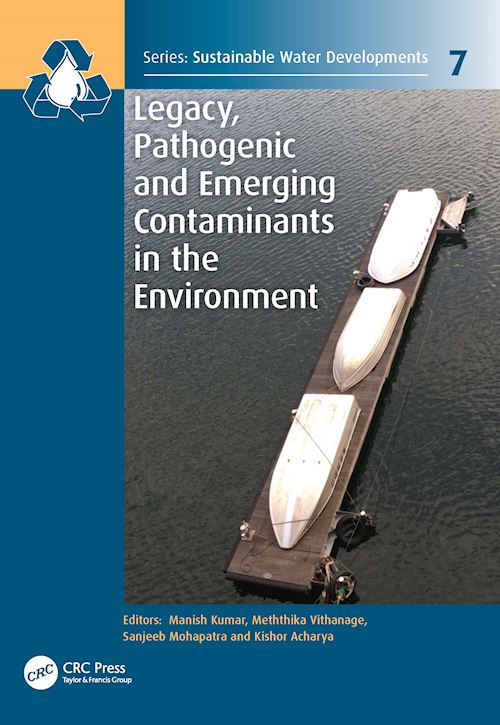Section 1 Distribution, occurrence, and fate of emerging contaminants 1. Occurrence and fate of emerging contaminants in groundwater Anshula Dhiman, Stuti Kushwaha, and A.L. Ramanathan 2. Occurrence, sources, and the fate of antibiotics, antibiotic-resistant bacteria and their resistance genes in groundwater and subsurface environment Sasikaladevi R, Kiruthika Eswari V, Govindaraj Divyapriya, Ramya Srinivasan, and Indumathi M. Nambi 3. Fate and transport of micro- and nanoplastics in graywater, fresh and marine water systems G. Sruthi, S. Aishwarya, Samarshi Chakraborty, S. Karthika, G. Divyapriya, and K. Sivagami 4. Solid waste and landfill leachate: The transient sources of emerging microbes and legacy contaminants for groundwater pollution Trinath Biswal and Krushna Prasad Shadangi 5. Emerging groundwater contaminants: Their manifestation and consequences Shreeja Datta, Arpita Roy, and Suresh Ghotekar Section 2 Techniques to study the fate, transport and removal of microbial contaminants 6. Assessment of microbial load removal potential of vertical constructed wetland systems treating dairy farm wastewater Deepa Minakshi, Swati Singh, Pradeep Kumar Sharma, Anju Rani, and Piyush Malaviya 7. Occurrence and fate of viruses in water Muskan Chakraborty, Saumya Vyas, Unnati Bhalerao, Abhranil Gangopadhayya, Manjita Srivastava, Muneesh Kumar Barman, Kailash Chand, Sai Tejaswi Lavuri, Meenakshi Singh, and Prudhvilal Bhukya 8. Microbial indicators and methods for source tracking faecal contamination of groundwater Salonee Martins, Aishwarya Pathare, Purva Salvi, Unnati Bhalerao, Mahalaxmi U Bhat, Meenakshi Singh, Muneesh Kumar Barman, Kailash Chand, Sai Tejaswi Lavuri, Nitish Venkateswarlu Mogili, Sanjeeb Mohapatra, Umesh Kumar, Ujjawal Sharma, Manjita Srivastava, and Prudhvilal Bhukya 9. Pathways for migration of microbial and organic contaminants: Special emphasis on run-off from aquaculture industries M. Divyagnaneswari and Parasuraman Aiya Subramani 10. Analysis of emerging microbial contaminants through next-generation sequencing Shubha Rani Sharma, Avinash Singh, Neha Singh, Amit Prasad, and Vinod Kumar Nigam Section 3 Environmental and health risk of anthropogenic and geogenic contaminants 11. Emerging contaminants of potential concern in aquatic Ecosystem: Fate and transport in microalgae Sarat Chandra T., Madhu Balaji C. K., and Ramesh Babu P. 12. Contaminants of emerging concerns and advanced treatment technologies Neha Garg and Akshay Jakhete 13. Occurrence and fate of phenolic compounds in groundwater and their associated risks Vijay Laxmi Mohanta and Brijesh Kumar Mishra 14. Sustainable governance of groundwater as drinking water in the post-COVID-19 world: An urban water security perspective Subham Mukherjee, Pradip Kumar Sikdar, and Sukdeb Pal 15. Comprehensive understanding of fate, transport and consequences of contaminants of emerging concerns (CECs) in urban environment Shivaraju Harikaranahalli Puttaiah, Yashas Shivamurthy Ravindra, Prabagar Jijoe Samuel, Sneha Yadav, and Aiswarya Cholayampara Murukadasan












